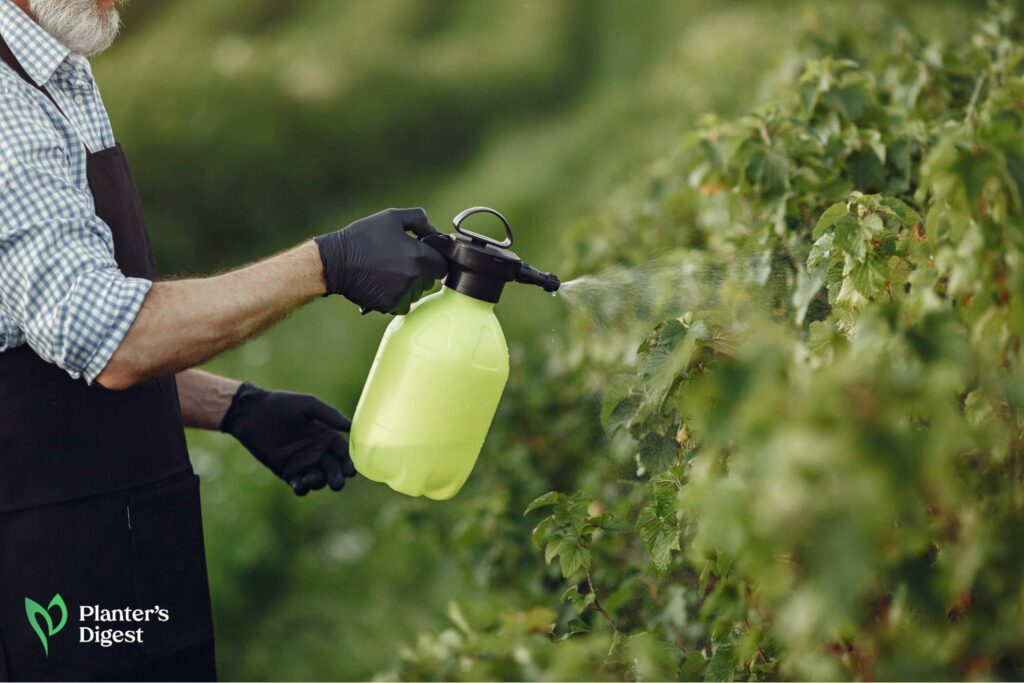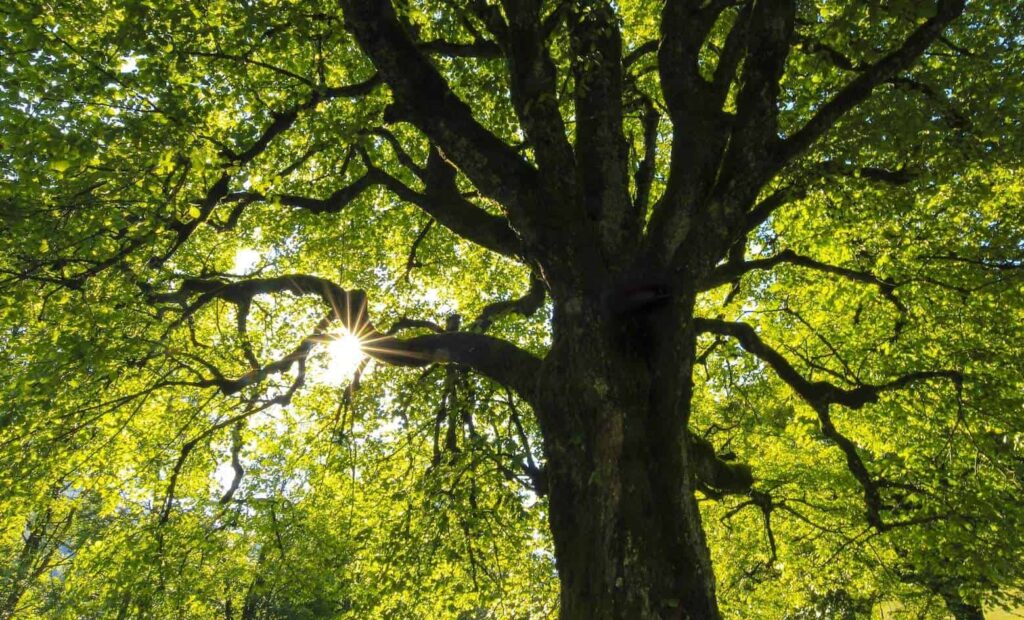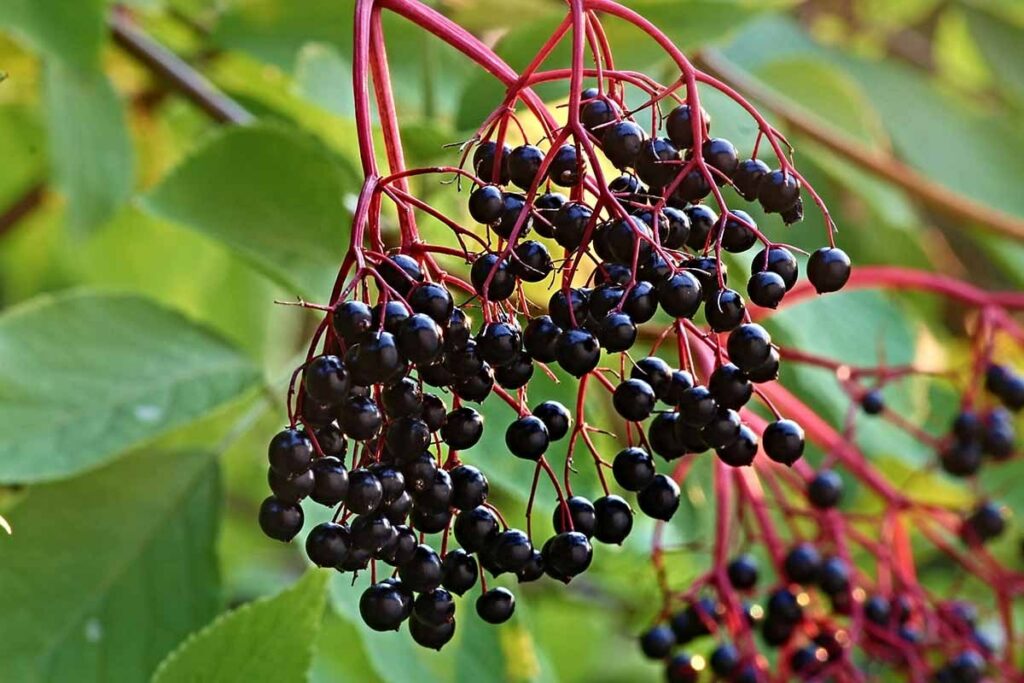Looking for the most efficient way to get rid of a tree? Try bleach. Not everyone knows it, but this household cleaning chemical can be quite the tree killer!
In this article, we’ll show you how to kill a tree using bleach. This method will help you eradicate a tree within mere weeks and without much trouble.
| Difficulty | Average ●●●○○ |
| Duration | 2 to 5 hours |
| Things You Need | Back or handheld sprayer Chlorine bleach solution Water Ax |
Can bleach kill trees?
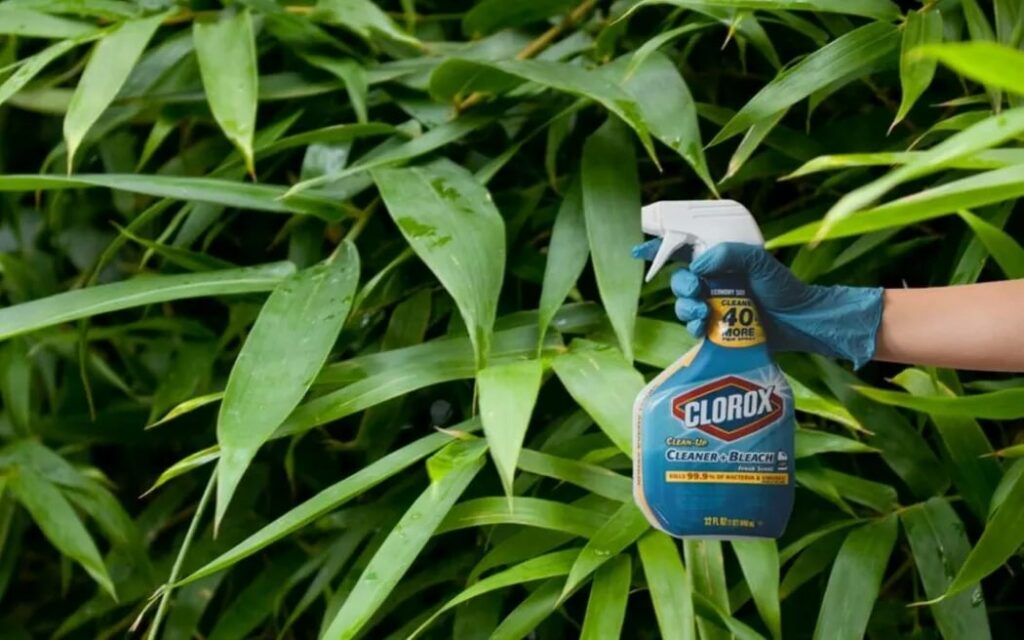
Bleach can kill trees because it dries out its leaves and branches and prevents necessary nutrients from getting to the roots. Without moisture and these essential nutrients, the tree will eventually rot and decompose.
That said, bleach is most effective in small, young trees because it can quickly penetrate the newly-established roots.
Trees and plants that require much care and attention to adapt to their environment will most likely die quickly from bleach too because of their increased vulnerability.
However, bleach cannot effectively kill large mature trees without planned application. Simply pouring or spraying it haphazardly on large trees can only cause damaging effects on the exposed areas.
How does bleach affect a tree?
Bleach affects a tree by drawing out moisture and preventing the leaves, branches, and bark from transporting essential nutrients to the roots. This harms the tree and may even lead to its death.
Once the leaves are sprayed with bleach, their foliage will turn brown or black and fall to the ground.
On the other hand, the branches will lose their normal color, and the root system will dry out. The tree will then rot and decompose through time.
How to Use Bleach to Kill Trees
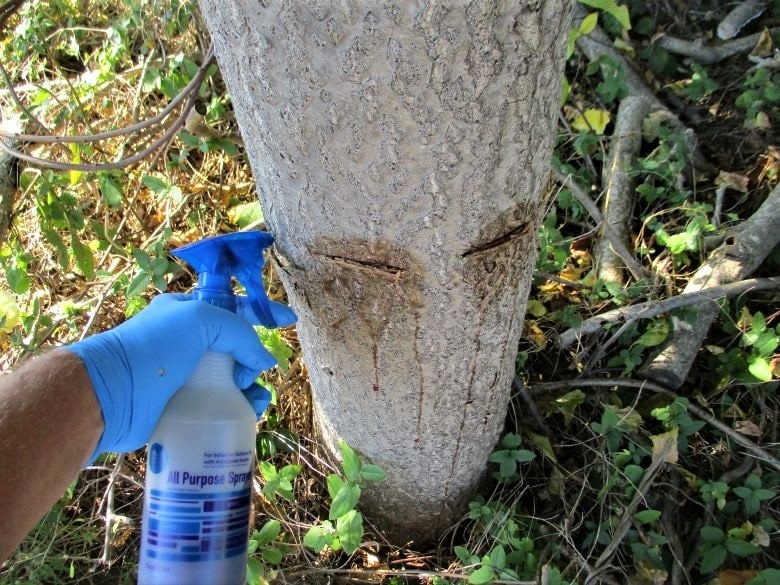
| Amount of time you need for the steps | 2 to 5 hours |
| Amount of time for the bleach to take effect | Tree – 6 to 20 weeks Stump – 3 hours |
| Things you’ll need | Back or handheld sprayer Chlorine bleach solution Water Ax |
Steps to kill trees with bleach without cutting down the tree beforehand:
- Mix the concentrated solution of chlorine bleach (sodium hypochlorite) with water in a 50:50 ratio.
- Place the solution in a back or handheld sprayer.
- Make gashes using an ax on the trunk’s circumference or remove a 4-to-8-inch-wide strip of the bark to speed up the bleach-killing process.
- Spray the solution on every visible part of the tree, such as its trunk, foliage, and roots.
Steps to kill trees or stumps with bleach by cutting down the tree beforehand:
- Mix the concentrated solution of chlorine bleach (sodium hypochlorite) with water in a 50:50 ratio.
- Place the solution in a back or handheld sprayer.
- Cut the tree down to a stump.
- Apply the bleach solution until it reaches the roots. Repeat this step until the tree stump is covered in the bleach solution.
- Dry the stump off with a cloth and seal the area around the tree stump with a coat of sealant or paint.
Is it safe to use bleach to kill trees?
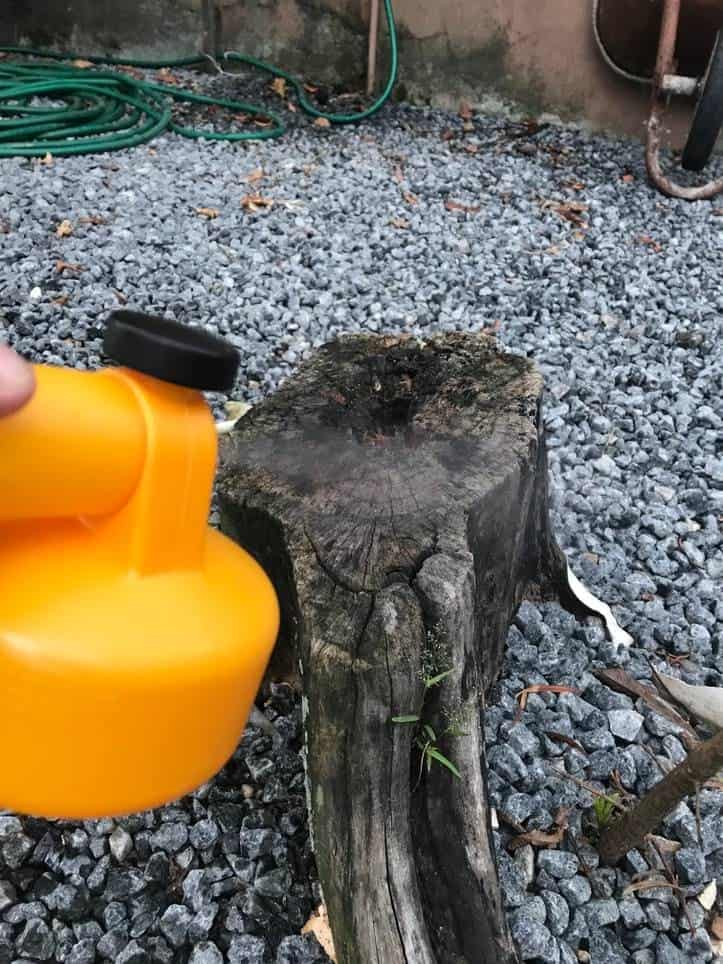
Using bleach to kill trees is generally safe as long as you ensure it does not come into contact with other living things.
You may risk several dangers if you let the bleach touch other living things in the area. Below are some notes on the effects of bleach on various things and creatures in your garden.
1. The Effects of Bleach on Plants and Animals
Bleach kills animals such as worms, birds, and even bunnies. Bigger animals like dogs and cats that come in contact with bleach also experience skin irritation, stomach upset, and nausea.
Plants also die off after contact with bleach because of the altered pH balance that can happen when enough bleach is added to the soil.
2. The Effects of Bleach on People
Bleach is highly corrosive to the skin and can cause burns and even death to humans when ingested.
In mild cases, people experience skin, lung, or eye irritation. It can even cause migraine, nausea, vomiting, and respiratory and stomach issues.
3. The Effects of Bleach on Soil
Bleach alters the soil’s pH balance, raising its pH level to 11 when its normal pH level ranges between 5 to 7. This results in the killing of essential microbes and bacteria that keep the soil healthy for flora.
By putting bleach on soil, plants are deprived of nutrients such as phosphorus and potassium, hampering photosynthesis. It also forces plants to take in toxic chemicals, thereby speeding up their death.
To restore the soil’s pH balance, you will need to rinse and flush out the bleach from the soil. Otherwise, most plants simply will not thrive there.
That said, some plants like black-eyed Susans, lavender, and Lenten roses can survive soil with high pH levels. As such, some plants may be able to survive soil that has been bleached.
Can you save a tree exposed to bleach?
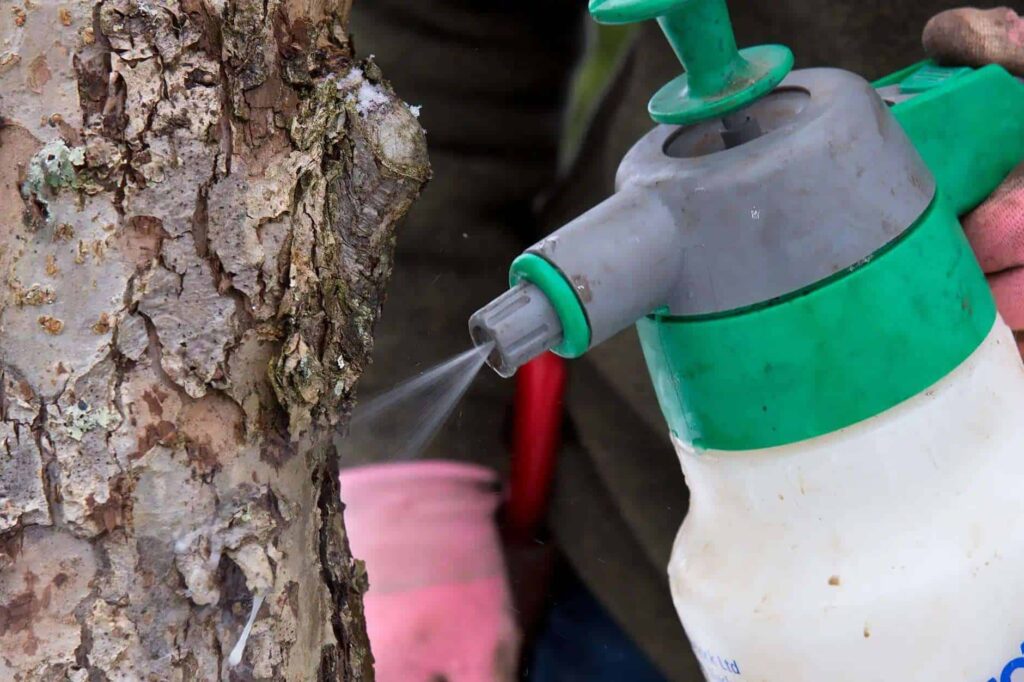
You can save a tree exposed to bleach by rinsing the tree and foliage with water, using a bleach neutralizer, and transferring the tree to an open space.
We’ll go through each of these steps in more detail below.
1. Rinse the tree and foliage.
Wash the toxins off the tree’s surface and leaves to reduce the bleach’s harmful effects.
Chlorine bleach will be diluted in water, causing it to run off. Rinse the exposed leaves thoroughly to prevent them from withering and dying quickly.
2. Use a bleach neutralizer.
After thoroughly rinsing and cleaning the tree, you can apply a bleach neutralizer to counteract the bleach’s ill effects on the tree.
3. Transfer the tree to an open space.
Depending on size, you can uproot and transfer the tree to a new open space. This will protect the tree from bleach-exposed soil and enable it to grow again in a healthier environment.
Frequently Asked Questions
Does bleach kill a tree stump?
Bleach kills tree stumps by drawing out all the moisture, penetrating its roots, and permanently cutting off the tree from all sources of essential nutrients to survive.
Does bleach kill the roots of the tree?
Bleach can kill the roots of a tree if it is directly applied to them, but it will often require a lot of time, a lot of bleach, and continuous application to kill all roots effectively.
What is the best natural alternative to bleach?
Epsom salt is the best alternative to bleach in killing trees. After cutting the tree to a stump, simply pour the Epsom salt and water mixture onto the stump, and it will die in weeks.
What are examples of systemic tree killers?
Chemical herbicides such as Hi-Yield 2, 4-D, imazapyr, picloram, and glyphosate are the most effective systemic tree killers available. They can effectively penetrate the tree and kill its underground root system.
Are there trees that withstand bleach?
Poison ivy, black walnut, lilac, and other native woody plants are hard to kill and can survive bleach treatment.


